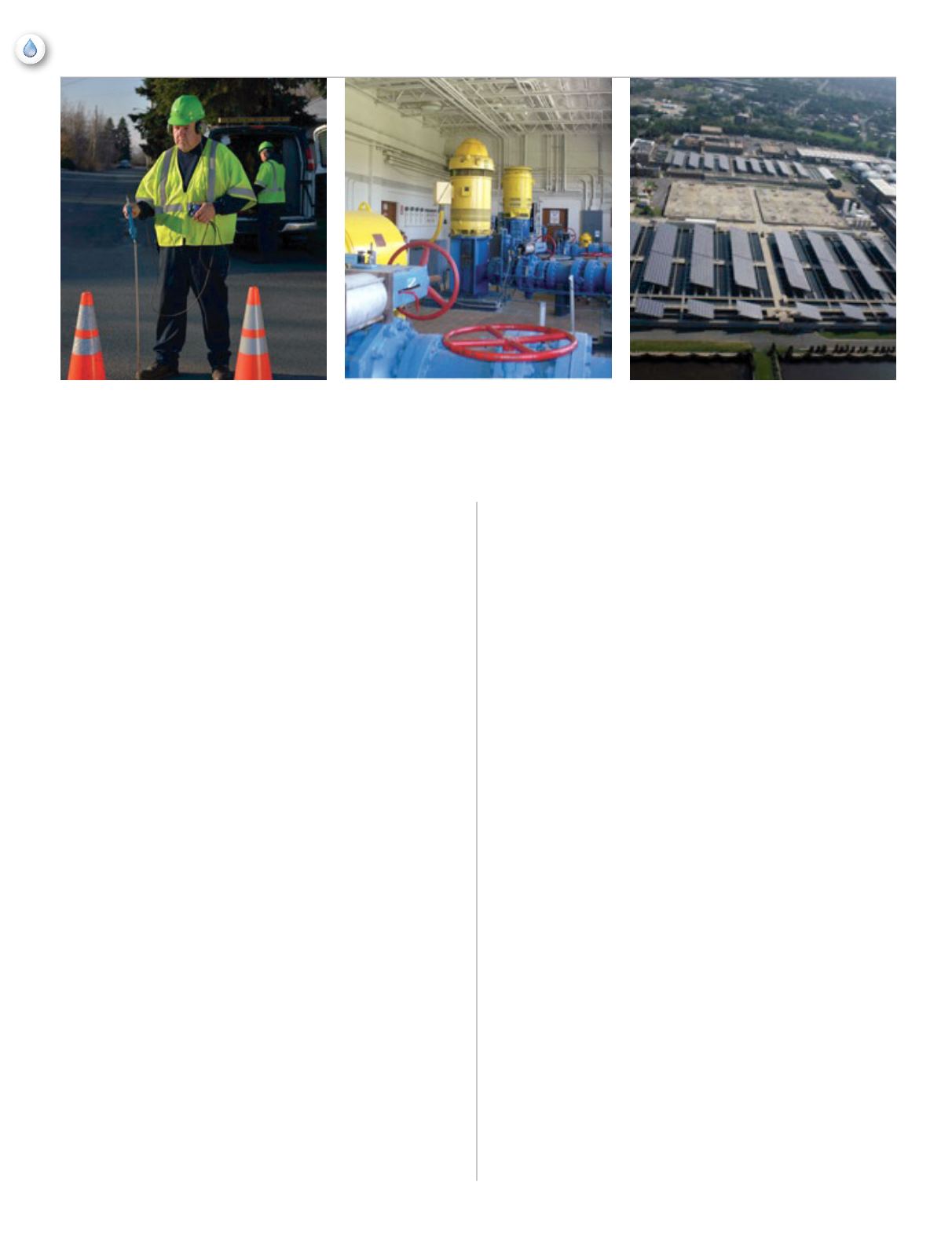

28
NCRWA.COM|
Winter 2015
feature
P
roducing energy requires water, and treating water requires energy. This
is the crux of the “water-energy nexus”—the latest buzzword designed
to draw attention to the explicit relationship between these two vital
resources. “Basically, every ounce of water saved is energy saved, and
vice versa,” said Dave Ribeiro, senior analyst in the Utilities, State, and
Local Policy Program at the American Council for an Energy Efficient
Economy (ACEEE). “The overlap is your nexus.”
Government agencies, water and energy utilities, private groups, and
industry associations have been focusing on this nexus as they attempt
to rein in spending, and adapt to the ongoing drought plaguing the
western third of the country. In many states, limited water availability
has already constrained the operation of some power plants and other
energy production activities, according to Energy.gov, and there is
little end in sight.
Hey, Big Spender
Water utilities are often among the biggest users of energy in a
community, and energy use is their biggest monthly expense, even
ahead of wages. According to EPA, energy costs can represent 25-30
percent of total operation spending for water and wastewater utilities,
making it a primary target for efficiency projects to help lower costs and
improve the performance of their services. And there is a lot of room
for improvement, said Aldie Warnock, senior vice president of public
policy for American Water, a national U.S. water and wastewater utility
company. “Current water infrastructure loses one out of every four-to-
five gallons of water treated,” he said. That is not only a waste of good
clean water, it also wastes a huge amount of electricity used to clean and
pump water that ends up leaking out of the system.
The good news is that there are many things water utilities can do
to improve energy efficiency, and energy utilities are willing to help.
Power companies often offer free energy audits, along with programs,
rebates and incentives, to help large customers reduce their energy
usage. By working with energy utilities, both organizations can achieve
benefits, Warnock said. American Water has partnered with energy
utilities on several occasions, including an initiative in which PG&E
allowed the water utility to use its smart grid in Monterrey, California,
to provide customers with real-time water usage data and price signals
to curb their water use. Because American Water didn’t have its own
smart grid technology, they couldn’t have implemented the project as
easily on their own, Warnock said. “There are a lot of ‘convergence’
opportunities like this one out there.”
Unfortunately, there are not enough conversations going on between
power companies and smaller water utilities, said Matt McCaffrey,
director of state regulatory affairs for the National Association of
Water Companies.
ACEEE recently reached out to water utilities for research into the
energy saving programs they are implementing. Disappointingly, less
than half of the utilities they contacted provided any data. Of those that
did, more than 80 percent had implemented some form of leak detection
projects, yet less than half were doing water conservation, and less than
a third had partnered with energy utilities in some way. “Our research
showed that there is only a scattering of programs that coordinate to
save both energy and water, and there are even fewer programs that are
jointly run by electric and water utilities,” Ribeiro said. The research
suggests that water utilities could be doing a lot more to track and
manage their energy use, and to work with energy utilities to jointly
address the water-energy nexus.
“Water utility operators can’t wait around for those conversations to just
happen,” McCaffrey added. He argued that it is not the job of either
organization to broker those relationships, so someone has to be willing
to break the ice. “Call your energy company, ask to speak to someone
about energy efficiency projects, and get started,” he said. It’s an easy
step to take that can deliver significant long-term savings down the line.
Tiny Bubbles
One example to consider is DC Water. The Washington, D.C., water and
sewer authority has a full-time energy expert on staff who works closely
with the local energy company, PEPCO, to measure energy use and
implement projects to achieve energy efficiencies. “Having someone
on staff who understands the energy industry is the first step to making
changes,” said George Hawkins, CEO and general manager of DCWater.
IDENTIFYING AND ADDRESSING THE WATER-ENERGY NEXUS
By Sarah Fister Gale
















